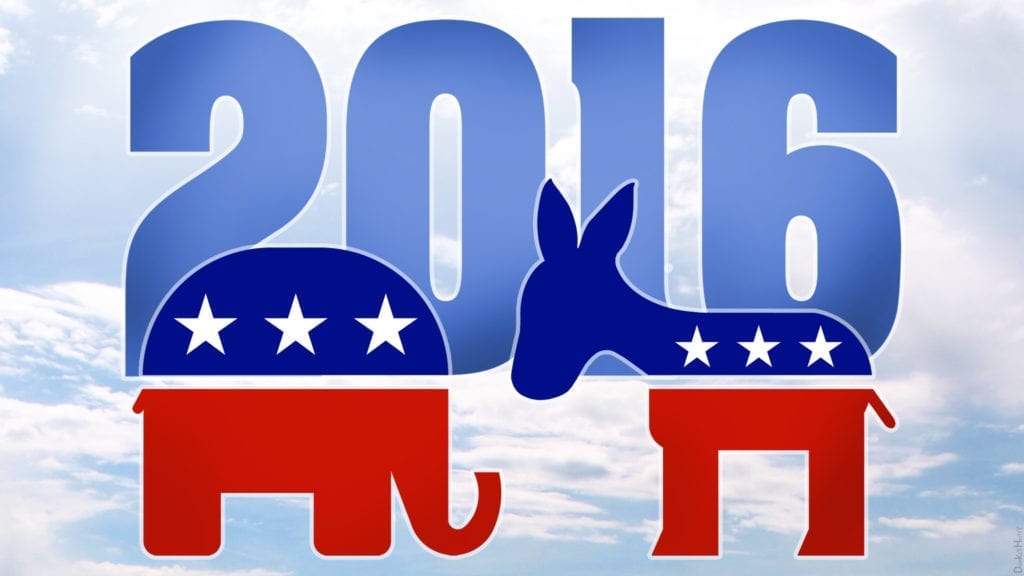President-elect Donald J. Trump: Results
In the first-of-five in the fifth installment of a five-part series analyzing each Presidential candidate’s policies, Samantha Lindsay dissects the 2016 election results.


https://www.flickr.com/photos/donkeyhotey/24101702220/in/photolist-CHMwo1-JJBqbo-JfqXJj-HtipDo-EmeBfD-q2LvvN-4EjNgb-hmzdu9-pFhzks-q4cpTN-rfqjvv-qb6LLi-q4cTcY-hFgVz7-hFhnAV-HPBQTn-fw4bh2-qXV8Bc-H9ycLj-j4Mzc2-qTskgB-DGFjYr-jc1Ah1-DdGiqr-E7VzQR-qFKZcy-pvL18H-aK7mXD-E7VA8z-CKwfkh-rMrUHE-rBeoWw-dhh6C5-rPZNZd-s7s6xE-dfrMXk-DuGv5d-DajVcb-fw4bfZ-GfbhE9-q3yPGu-oykALh-HV12FW-qb5h4H-CKwgN7-EfaRhe-jP8E6c-nWr2DW-DUbqVj-rQ8WnK
Written by Samantha Lindsay
The following report is the first-of-five in the fifth installment in a series presenting a comparative analysis of select legislative proposals that were a part of the platforms of the two major candidates in the 2016 presidential election; Democrat (D) Hillary Rodham Clinton and Republican (R), Donald J. Trump. In the four previous installments published before the election, I addressed the candidates’ positions on the issues of paid family leave, the economy, gun control, and the Affordable Care Act.
This article will begin with an overview of the Electoral College and a breakdown of election results. It will include an analysis of the errors made by the media and polling agencies leading up to the election and a final analysis of the issues that propelled Trump to victory. Throughout this report, I will also be commenting on the issues raised by people who are protesting the outcome of the election.
This series is not an endorsement of either candidate.
The Electoral College
The 12th Amendment of the U.S. Constitution governs the Electoral College. According to Tara Ross of the Heritage Foundation, “The Constitution provides for a presidential election among the states, rather than among individuals.” And, “States are allocated one elector for each of their representatives in Congress.”
There are two senators for each of the 50 states, and 435 members of the House of Representatives, bringing the total number of the members of Congress to 535. The Electoral College has 535 electors that represent the 50 states, plus three representing the District of Columbia for a total of 538.
Every state is constitutionally entitled to at least three representatives; therefore, every state is entitled to at least three electors. Several states have more electors based on the U.S. Census and the number of Congressional districts within the state. For example, California has the most electors (55), determined by its population and the total number of its Congressional districts.
The electors are not bound by constitutional law to vote according to the will of the people; however, as a matter of tradition and most state laws, the electors usually cast their vote for president based on the popular vote in their respective states. In the national election, the candidate who wins the vote of a total of 270 electors or more from the Electoral College wins the election.
2016 Presidential Election Results
On Nov. 8, Donald J. Trump became the 45th President-elect of the United States when he won the election with a total of 306 Electoral College votes. However, according to the most recent figures reported by CNN, Trump’s opponent Hillary Clinton won 64.5 million votes (48.1 percent of the popular vote) to Trump’s 62.4 million votes (46.5 percent of the popular vote). The difference is a margin of 1.6 percent in Clinton’s favor. The discrepancy between the Electoral College and the popular vote has created controversy over the results of this election.
As we have witnessed, it is possible for a presidential candidate to win the popular vote nationally and lose the Electoral College, though it is rare. This possibility has led many people to suggest that the government dispense with the Electoral College and adopt direct democracy. To achieve the goal of direct democracy would require that the Constitution be amended.
The amendment process requires that three-fourths of the state’s legislatures (approximately thirty-eight) approve an amendment before the amendment can be ratified. However, if the U.S. became a direct democracy, it would potentially give the most populated states the power to determine the outcome of all future presidential elections. Therefore, it is unlikely that small states would support direct democracy and the proposed law would never be ratified. Nevertheless, the difference in the results of the Electoral College and the popular vote raises the question, “How did Trump win?”
To answer that question one must first determine where each candidate won, which will explain how Trump won while clarifying who voted for him, and will ultimately reveal why he was elected.
The next part of this installment will focus on the geography of the Electoral College.
Edited by Ben Webb
Featured image by DonkeyHotey on Flickr, obtained using creativecommons.org



